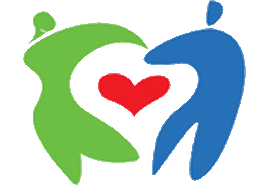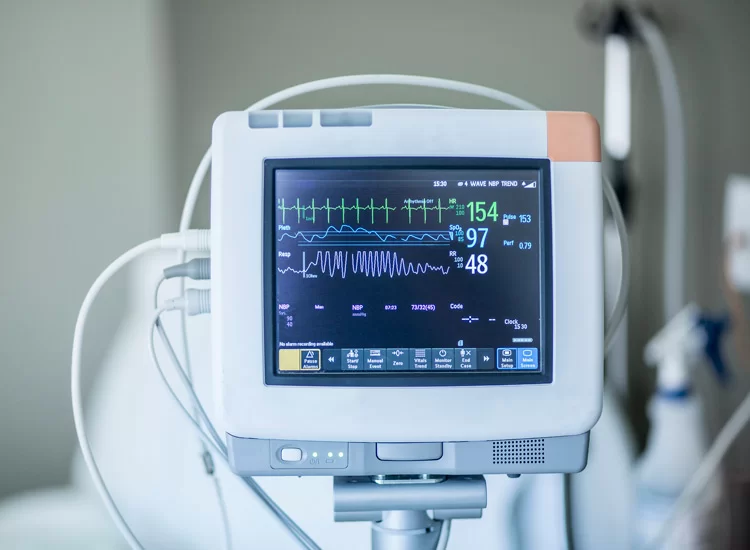Echocardiography is a test that uses sound waves to produce live images of your heart. The image is called an echocardiogram. This test allows your doctor to monitor how your heart and its valves are functioning. The images can help them get information about:
- the size of the heart, for instance, if there is any change in the chamber size, dilation, or thickening
- blood clots in the heart chambers
- fluid in the sac around the heart
- problems with the aorta, which is the main artery connected to the heart
- problems with the pumping function or relaxing function of the heart
- problems with the function of heart valves
- pressure in the heart
An echocardiogram is key in determining the health of the heart muscle, especially after a heart attack. It can also reveal heart defects, or irregularities, in unborn babies. Getting an echocardiogram is painless. There are only risks in very rare cases with certain types of echocardiograms or if contrast is used for the echocardiogram.
Why is it performed?
Your doctor may order an echocardiogram for several reasons. For example, they may have discovered something unusual in other tests or while listening to your heartbeat through a stethoscope.
If you have an irregular heartbeat, your doctor may want to inspect the heart valves or chambers or check your heart’s ability to pump. They may also order one if you’re showing signs of heart problems, such as chest pain or shortness of breath or if you have an abnormal EKG (electrocardiogram).
Types
There are several different types of echocardiograms.
Transthoracic echocardiography
This is the most common type of echocardiography.
A device called a transducer will be placed on your chest over your heart. The transducer sends ultrasound waves through your chest toward your heart. A computer interprets the sound waves as they bounce back to the transducer. This produces the live images that are shown on a monitor. A health specialist will follow guidelines for collecting different types of images and information.

What to expect
Transthoracic echocardiography is painless and noninvasive. There is no need to do any special preparation before having this test, and no recovery time will be needed. At the test center, the following will most likely happen:
- You will need to remove your clothes from the waist up and put on a gown.
- If the doctor is using a contrast dye or saline solution, they will inject or infuse the solution.
- You will lie on your back or side on a table or stretcher.
- The technician will apply gel to the chest and move a wand across the chest to collect images.
- They may ask you to change position or hold your breath for a short time at specific intervals.
Transesophageal echocardiography
For more detailed images, your doctor may recommend a transesophageal echocardiogram. In this procedure, the doctor guides a much smaller transducer down your throat through your mouth. They will numb your throat to make this procedure easier and eliminate the gag reflex.
The transducer tube is guided through your esophagus, the tube that connects your throat to your stomach. With the transducer behind your heart, your doctor can get a better view of any problems and visualize some chambers of the heart that are not seen on the transthoracic echocardiogram.
What to expect
Before the appointment, your doctor will likely ask you to not eat or drink anything for
- may inject a mild sedative to help you relax before starting
- will numb your throat with an anesthetic gel or spray
- will gently insert the tube into your mouth and guide it down your throat, taking care to avoid injury
- will move the tube up, down, and sideways to get clear images
You should not feel any pain during the procedure, and there will be no difficulty breathing. The procedure usually takes 20 to 40 minutes. After the procedure, you can expect the following:
- You may need to stay
a few hoursTrusted Source in the hospital while the doctor monitors your blood pressure and other signs. - Your throat may be sore for a few hours.
- The doctor will likely advise you to not eat or drink anything for 30 to 60 minutes after the procedure and to avoid hot liquids for a few hours.
- You will be able to return to your daily activities after 24 hours.

Stress echocardiography
A stress echocardiogram uses transthoracic echocardiography, but the doctor takes images before and after you’ve exercised or taken medication to make your heart beat faster. This allows your doctor to test how your heart performs under stress. It can also show if there are any signs of heart failure, high blood pressure, and other problems.
What to expect
Your doctor will attach patches to your chest that link up to the echocardiogram machine. Then they will use one of the following to slightly increase the stress on your heart:
- exercise on a treadmill or stationary bicycle
- medications, such as dobutamine
- adjusting a pacemaker, if you have one
The echocardiogram and other devices will collect data
- heart rhythm
- breathing
- blood pressure
For an exercise stress test:
- Come to the test prepared to exercise.
- Before the test, a doctor may inject a contrast dye to help provide a clearer image.
- The doctor will measure your heart rate and blood pressure before you start, during, and after the exercise.
Before the appointment, your doctor will tell you if you need to make any changes, such as stopping medication, before coming to the test. The stress echo usually takes about 20 to 30 minutes but can vary depending on how long you exercise or how long it takes the medication to raise your heart rate.
Three-dimensional echocardiography
A three-dimensional (3-D) echocardiogram uses either transesophageal or transthoracic echocardiography to create a 3-D image of your heart. This involves multiple images from different angles. It’s used before heart valve surgery and to diagnose heart problems in children.
What to expect
In some cases, a doctor
Fetal echocardiography
Fetal echocardiography is used with expectant mothers sometime during weeks
What to expect
The procedure is similar to that for transthoracic echocardiography, but the doctor will pass the wand over the pregnant person’s belly around the place where the baby’s heart is.
CONTACT US
Heart Care Clinic Of Kiambu
For all appointments and inquiries, please call Here or click here to request an appointment online. We are happy to hear from you.





